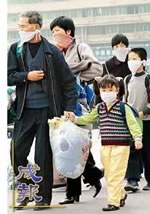How much would your company be impacted in the event of an avian flu pandemic? It is, of course, impossible to know with any certainty in the absence of the actual crises; however that does NOT mean that you can’t begin to anticipate what some of the problems might be.
The biggest difference in preparing for a pandemic as opposed to more common business continuity planning is that one of the biggest challenges will be the possibility of massive staff absenteeism due to personal or family illness, fear of becoming ill or of infecting family members.
How can you know how many staff might choose to stay home rather than come to work? One way to get an idea of a possible impact would be to survey all your staff now before a pandemic does occur in your area. While there are no guarantees that the responses that people give now when the concern of a pandemic is still theoretical and how they might actually respond during a real crisis, it can provide some idea of the potential disruption to your business.
Staff Survey to Estimate Potential Effects of a Pandemic on Our Organization:
The purpose of this survey is to provide information which will help in pandemic planning preparation in our organization.
NOTE: ALL INFORMATION IS CONFIDENTIAL AND NO NAMES ARE TO BE ATTACHED TO THIS SURVEY.
1. Do you take public transportation to or from work?
- Yes, all or most of the time
- Occasionally
- No, or almost never
2. If our geographic region were experiencing an avian flu pandemic, how likely would it be that you would use public transportation to get to or from work?
- Highly likely
- Somewhat likely
- Somewhat unlikely
- Highly unlikely
- Not applicable
3. Do you car pool to work?
- Yes
- Occasionally
- No
4. If our geographic region were experiencing an avian flu pandemic, how likely would it be that you would use a car pool to get to and from work?
- Highly likely
- Somewhat likely
- Somewhat unlikely
- Highly unlikely
- Not applicable
5. If schools and/or day cares were closed by order of the Medical Officer of Health because of an avian flu pandemic, would you most likely:
- Stay home to look after your children.
- Stay home to look after grandchildren, nieces, nephews, or other young relatives.
- Be able to arrange for alternate child care.
- Be unaffected by the closure of schools or day care.
6. If the Medical Officer of Health declared a medical emergency situation due to the existence of an avian flu pandemic, how likely do you think it would be that you would come to work?
- Highly likely
- Somewhat likely
- Somewhat unlikely
- Highly unlikely
7. If someone in your family other than yourself were ill with the avian flu during a declared pandemic, how likely do you think it would be that you would come to work?
- Highly likely
- Somewhat likely
- Somewhat unlikely
- Highly unlikely
8. If you knew that a work colleague had a family member at home who had been diagnosed with avian flu, how likely would it be that you would come to work?
- Highly likely
- Somewhat likely
- Somewhat unlikely
- Highly unlikely
9. Do you think that coming into contact with the avian flu virus would present a higher risk to you than it would to the majority of your colleagues?
- Yes
- No
- Not sure
10. Do you think that you have sufficient information to protect yourself and your family from an avian flu?
- I think I have sufficient information to protect myself and my family in the event of an avian flu pandemic.
- I don’t have sufficient information on how to protect my self and my family in the event of an avian flu pandemic.
- I don’t know if I have enough information to protect myself and my family in the event of an avian flu pandemic
11. Has your organization done enough to provide information to staff about organizational preparedness in the event of an avian flu pandemic?
- My organization has done an excellent job in providing information to everyone.
- My organization has provided some information on planning for an avian flu pandemic.
- I am not aware of anything my organization has done with respect to planning for an avian flu pandemic.
For more information on Pandemic planning from a business continuity perspective, please feel free to contact Pitsel & Associates Ltd. Calgary, Alberta (403) 245-0550. "The time to plan, is when you have time to plan."






